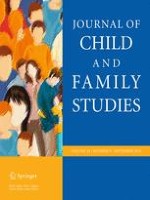01-09-2015 | Original Paper
Factor Validity of a Proactive and Reactive Aggression Rating Scale
Gepubliceerd in: Journal of Child and Family Studies | Uitgave 9/2015
Log in om toegang te krijgenAbstract
Aggressive behaviors can be classified into proactive and reactive functions, though there is disagreement about whether these are distinct constructs. Data suggest that proactive and reactive aggression have different etiologies, correlates, and response to treatment. Several rating scales are available to characterize aggressive behavior as proactive or reactive; one commonly used scale was originally developed for teacher ratings, referred to here as the Antisocial Behavior Scale (ABS). However, no data are available on the psychometric properties of the ABS for parent ratings. This study examined the factor structure and convergent/divergent validity of the parent-rated ABS among 168 children aged 6–12 years with attention-deficit hyperactivity disorder, a disruptive behavior disorder, and severe aggression enrolled in a randomized clinical trial. Multidimensional item response theory was used to confirm the original factor structure. The proactive and reactive factors were distinct but moderately correlated; the algorithm items exhibited acceptable fit on the original factors. The non-algorithm items caused theoretical problems and model misfit. Convergent and divergent validity of the scale was explored between the ABS and other parent-report measures. Proactive and reactive aggression showed differential correlates consistent with expectations for externalizing symptoms. The subscales were correlated weakly or not at all with most non-externalizing symptoms, with some exceptions. Thus, the original factor structure was supported and we found preliminary evidence for the validity of the scale, though the results suggest that the constructs measured by the ABS may not be totally distinct from general behavior problems in this clinical sample.
